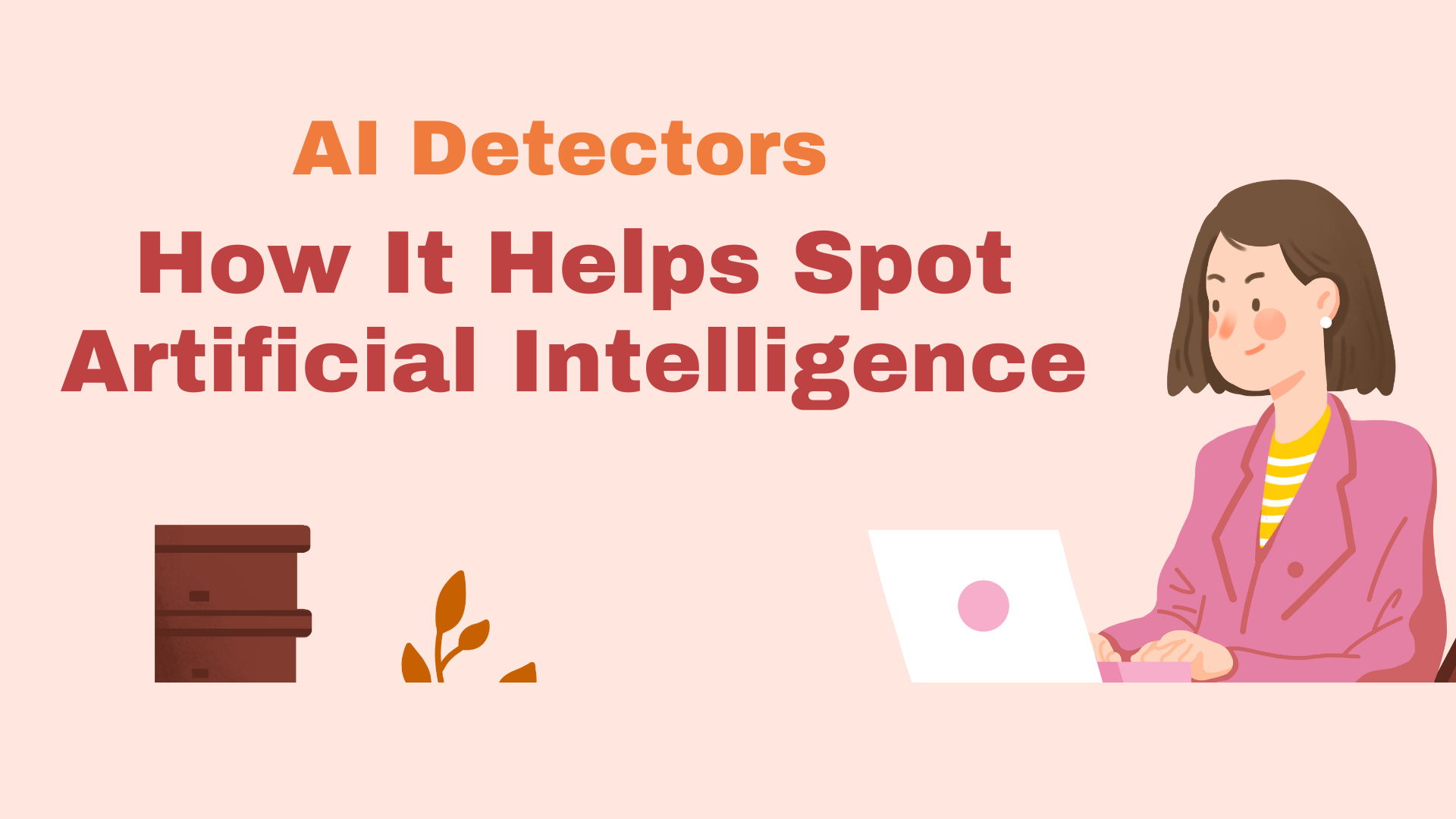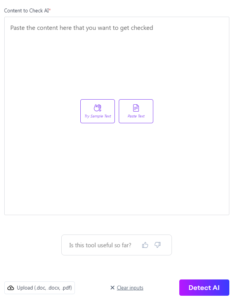
Artificial intelligence (AI) is everywhere these days. From chatbots to voice assistants, AI technology is becoming a big part of our lives. But how can you tell if something was created by AI or by a real person? That’s where AI detectors come in. Let’s explore what AI detectors are, why they are important, and how they work.
What Is an AI Detector?
In simple terms, an AI detector is a tool that enables you to discern whether the text or content was written by a computer or authored by a human.
You can liken it to being just like a detective. It reviews clues to determine who authored something. The AI detectors base their decision on text patterns in the decision-making that do or do not stem from AI.
Why Are AI Detectors Important?
AI detectors are important for several reasons:
- Trust and Accuracy: Knowing whether something was written by a person or an AI helps us trust the information. For example, if you’re reading a school essay or a news article, you want to know if the writer is a real person or a computer programmer.
- Avoiding Plagiarism: AI detectors can help ensure that work submitted as a person’s own is not just copied or generated by an AI without proper credit.
- Educational Purposes: In schools, teachers use AI detectors to make sure students are writing their own work. This helps maintain fairness and originality in assignments.
Examples of AI Detector Tools
Here are some examples of AI detector tools you might find useful:
- PerfectEssayWriter.ai: PerfectEssayWriter is one of the popular essay writers whose AI Detector helps you check if your content was written by an AI. It’s one of the best AI detectors in the market which is easy to use and provides quick results.
- Grammarly: While Grammarly is known for grammar checking, it also has features to help detect if content might be AI-generated.
- Turnitin: Often used in schools, Turnitin helps check for plagiarism and can also detect AI-generated content.
- Copyscape: This tool helps find duplicate content on the web, which can also help identify AI-generated text.
How Do AI Detectors Work?

Here’s a simple way to understand how AI detectors work:
- Analyzing Patterns: AI detectors look at how the text is written. They check for certain patterns that are common in AI-generated content but less common in human writing.
- Checking for Repetition: AI often repeats phrases or uses similar structures. Detectors look for these repetitions to decide if AI was used.
- Examining Complexity: AI writing can sometimes be overly complex or too perfect. Detectors analyze the complexity of the language and structure to see if it seems too polished.
- Comparing to Known Examples: Some detectors compare the text to examples of known AI-generated content. If the text is similar, it might be flagged as AI-written.
Using an AI Detector Tool
Here’s how you can use an AI detector tool:
- Enter Your Text: Copy and paste the text you want to check into the AI detector tool. For example, you might want to check if an essay or article was written by a computer.
- Run the Analysis: Click the button to start the analysis. The tool will examine the text and give you a result.
- Review the Results: The tool will tell you whether the text is likely to be AI-generated or written by a human. It might also give you some details about why it made that decision.
Benefits of Using AI Detector Tools
Here are some reasons why AI detector tools are useful:
- Ensures Authenticity: They help confirm whether the content is original and not just copied from an AI.
- Improves Academic Integrity: In schools, these tools help make sure that students are submitting their own work and not relying on AI.
- Enhances Research Quality: When doing research, knowing if a source is human-written or AI-generated helps in evaluating its credibility.
- Prevents Misuse: AI detectors help prevent the misuse of AI for cheating or misleading information.
How AI Detectors Fit Into the Writing Process
Using an AI detector is just one part of the writing and editing process. Here’s how it fits in:
- Pre-Writing: Before you start writing, you don’t need to worry about AI detectors. Focus on planning and researching your topic.
- Writing: As you write, try to make your work as original as possible. Use your own ideas and voice.
- Editing: After you finish writing, use an AI detector to check if your text seems too perfect or repetitive. This helps ensure your work is genuinely your own.
- Final Review: Make any necessary changes based on the results from the AI detector. This helps improve the quality and originality of your work.
Common Mistakes to Avoid
Even when using AI detectors, here are some mistakes to watch out for:
- Over-Reliance: Don’t depend solely on AI detectors. They are helpful, but they might not catch everything.
- Ignoring Context: AI detectors are good, but they can sometimes miss the context. Make sure you understand your results and use your judgment.
- Misinterpreting Results: If the tool says your text might be AI-generated, review it yourself to make sure it’s really original.
Try an AI Detector Today
Are you ready to see if your writing is truly original? Try the AI Detector available on PerfectEssayWriter.ai. Such a tool shall also be of service to students and researchers while writing genuine content. Surrendering high-quality texts can be made possible through the use of the AI detector that maintains the authenticity of your work.
In conclusion, it is a powerful tool that helps you determine whether the piece of text under question is created by a machine or a human. That is, ensuring its authenticity, academic integrity, and quality in the research zone. Try an AI detector and see how it can help in your writing!







